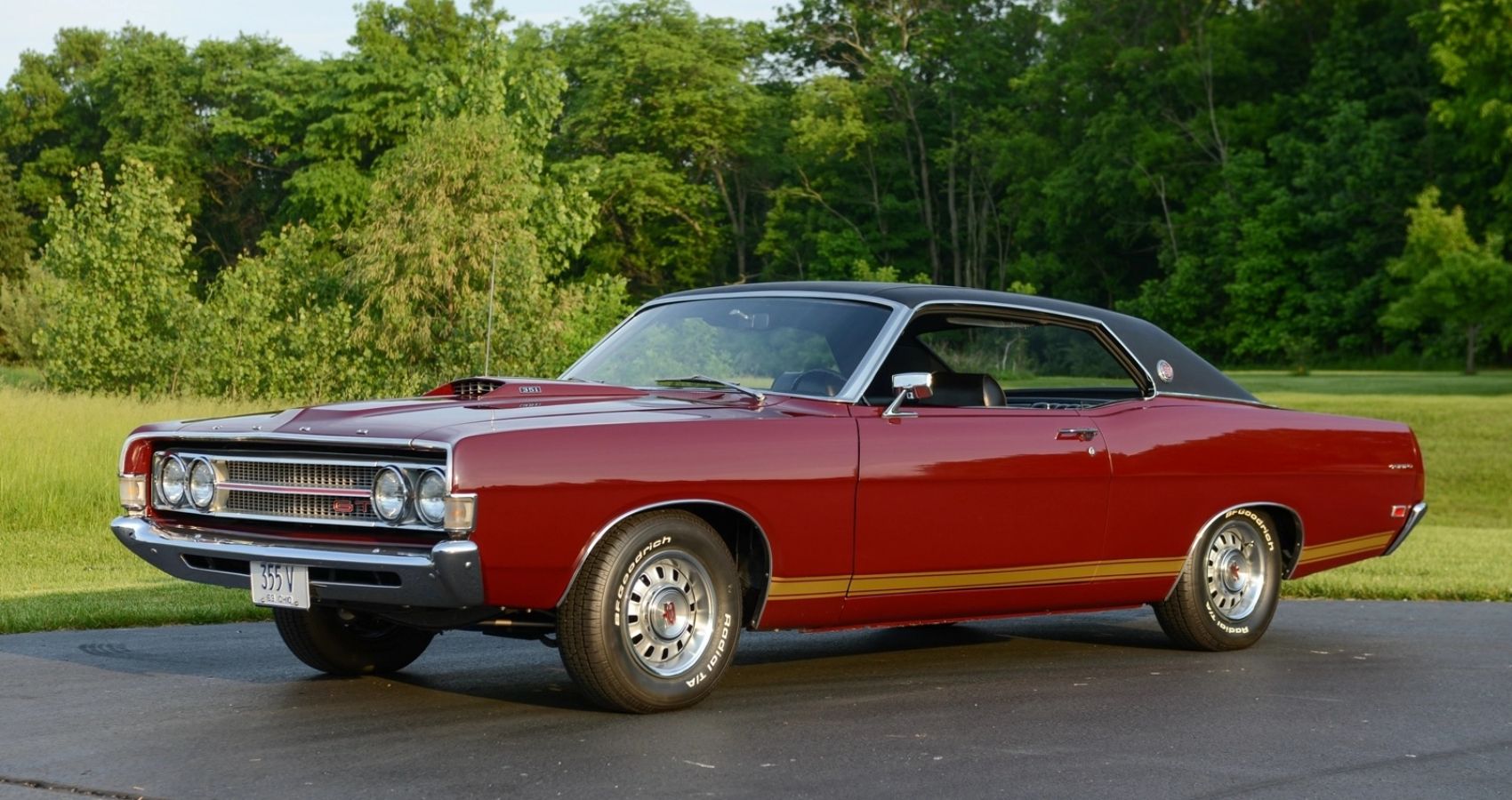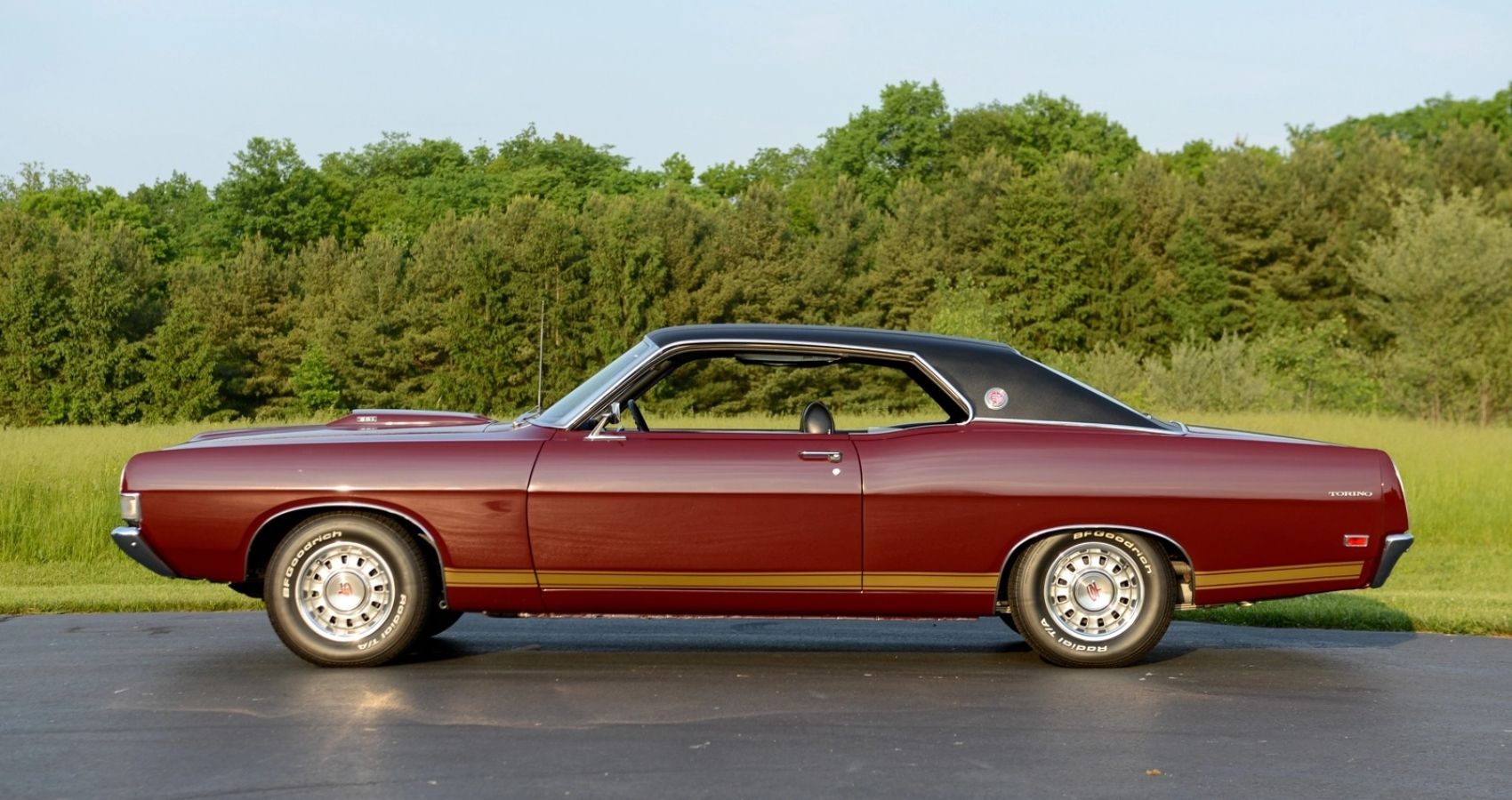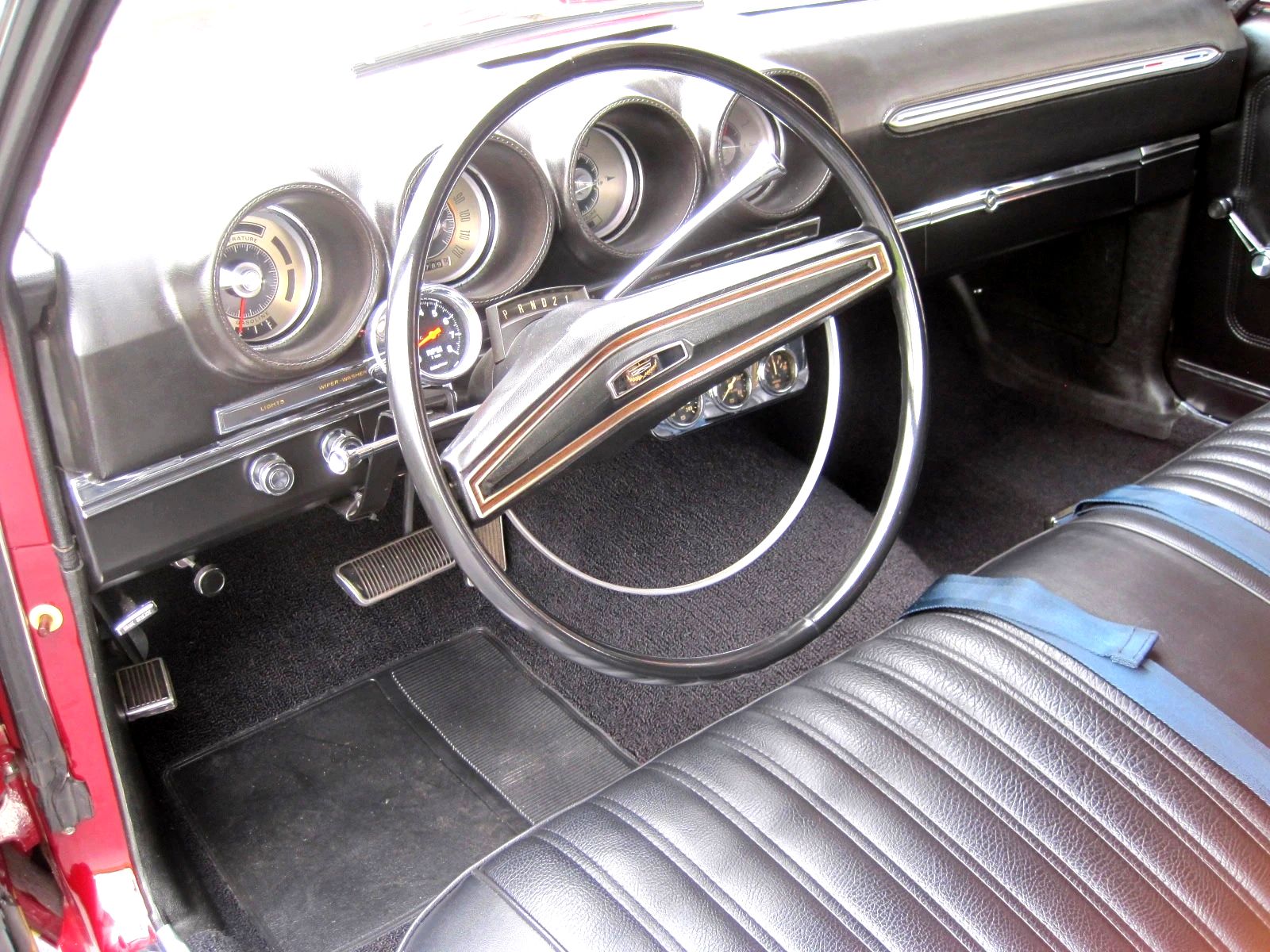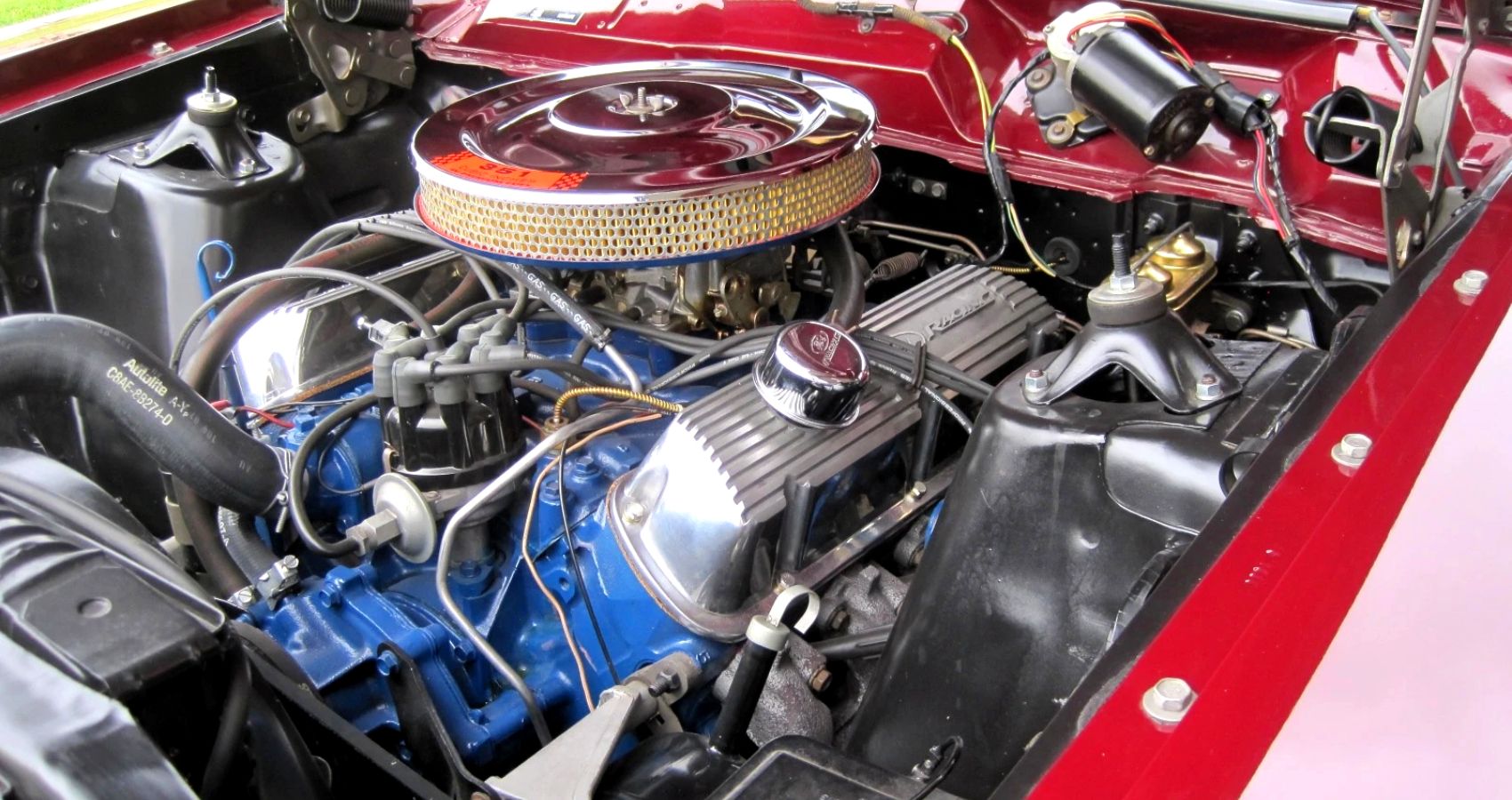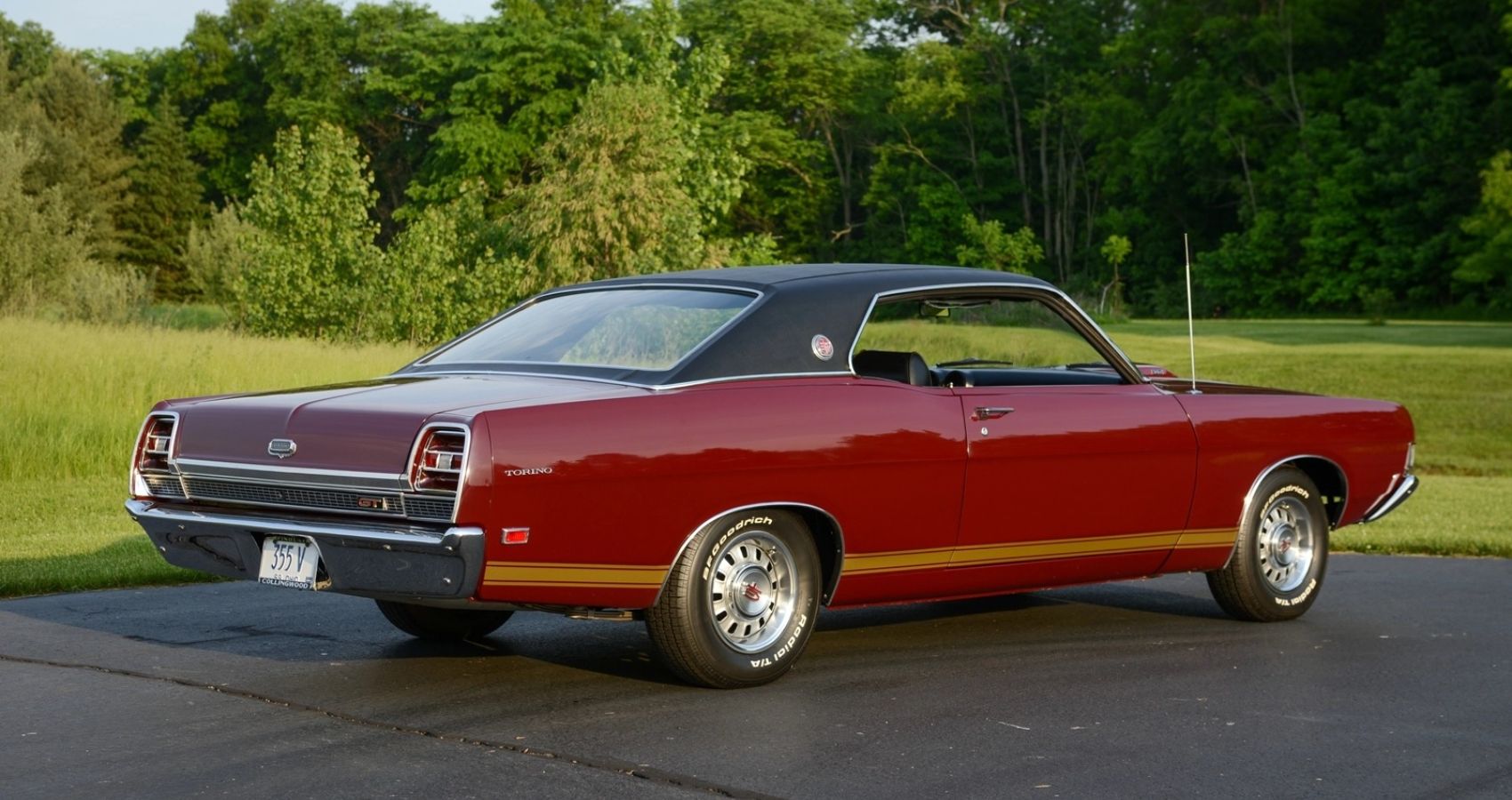Despite that Ford's intermediate Fairlane series rose to the top of the charts for much of the ‘60s, it appeared very dull in comparison to GM’s muscle cars. So, in 1968, the brand launched a restyling project to change the image of their beloved Fairlane.
Besides revising the lineup’s appeal, this update also involved a split in model designations: "Fairlane" and "Fairlane 500", which were cheaper variants, while the Torinos (their first generation of that nameplate) would then be the premium versions. The Torino became a hit that year and was ultimately dubbed as “Ford’s newest bright idea”. The Ford Torino GT made a perfect alternative to the Chevelle, the GTO, and the Road Runner, and gathered a slew of dedicated fans.
In GT grade, the Ford Torino came in four body configurations: notchback two-door, convertible, Ranchero, and the fastback 'SportsRoof' models. One of our favorite additions to the family was the Cobra model, which shared its 428-cubic-inch engine with the Ford Mustang. Thanks to the cosmetic changes for the 1969 model year, the Ford Torino GT became among the most desirable muscle cars in the late ‘60s, dominating its competition.
Even after five decades, the first-generation Torino GT remains an appealing option for a powerful, dependable, and reasonably priced muscle car. Here’s why you should add the 1969 Ford Torino GT to your collection.
The 1969 Ford Torino GT Was The Sportier Breed Of The Pack
The Torino was like a supersized muscle vehicle, blending muscle car sensibilities into a fairly larger form. The outlook of the 1969 fastback coupe remained unchanged from the previous model year. The front end featured an Oldsmobile-style grille, presented with the required GT badging on the lower left, encircled by attractive stainless molding.
Backing up to a clear windshield with great brite-work is a nice sporty blacked-out hood with a hood scoop in the Cobra Jet design. Meanwhile, black vinyl covered the roof of this muscular hardtop, giving it a distinctive look. We enjoy how the chrome "gills" and the curved rear fenders contrasted with the top front and bottom rear curves of the side windows.
The rear end received two squared-off tail lights, an egg-crate filler panel with another GT insignia, and a spotless, shining bumper. Despite its success, it was the final gasp of the era before emissions controls and crashworthiness standards sapped all the domestic industry's vigor. This body lasted two years before it was eventually replaced in 1970 by a considerably more curvaceous shape on essentially the same foundation.
The Ford Torino Has A Simplistic Interior Appeal
The Torino GT’s cabin had a sweet black shade that concealed the steering wheel, door panels, and seats, and a few chrome accents to the sides. The front split bench and the rear bench were classily upholstered in black tuck and roll fabric with smooth black bolsters. The armrest/door pull, window crank, and Grand Touring insignia came housed in a central tuck and roll panel with smooth black vinyl surrounds on the door panels, which all spiced up the design.
Ford housed instrumentation in a multi-circle molded dash up front with the steering wheel (and shifter) that sat proudly atop the factory column. This circle design was entirely made of padded black vinyl and featured the original gauges within the four deep-set surrounds. A horizontal bar beneath the dashboard held the AM/FM/Cassette player as well as various knobs and dials.
Luxury amenities including deep-pleated bucket seats and the simulated wood grain on the instrument panel were standard. Optional extras included a 6,000 rpm tachometer, Comfort-Stream Ventilation, and a floor console. Other optional features for the GT included headrests and power windows.
The Ford Torino GT Offered A Plethora Of Powertrains
In 1969, Ford dropped the 289 engine from the lineup. The standard engine became 220 horsepower 302 cubic-inch V8. Drivers looking for a little more bite opted for the 351 Windsor with a two or four-barrel carburetor. These engines each produced 250 and 290 horsepower. If it wasn't enough power, the 320 horsepower 390 cubic-inch engine was also available as an option.
One seriously desired engine came with the Cobra model, featuring an 11.3:1 squeeze, unique heads, a high-lift cam, and a 700-Cfm Holley four-barrel on a high-rise manifold. Making around 370 horsepower, this engine was later designated as the 429 Cobra Jet Ram-Air when the shaker scoop came into the picture. This power, combined with the perfect rear-emphasis weight distribution, gave the car a fantastic dig off the line. The Cobra accelerated from 0 to 60 mph in 5.6 seconds and ran the quarter mile in 14.04 seconds at 100.61 mph.
Even after so many decades, the 428 continues to be a major reason why these cars are so soft-after. While the 428 Cobra Jet-equipped models of 1968-69 appear to have a cult following, lesser-powered siblings are less appealing these days.
The 1969 Ford Torino Is A Reasonably-Priced Classic Muscle Car
The Ford Torino was certainly a popular muscle car back in the day. Of over 350,000 units of all trims built for 1969, more than 81,000 were Torino GTs. That said, there are so many of these cars that are still on the road today.
A 1968-69 Ford Torino GT should cost roughly $39,265 today, depending on condition and mileage, which is well worth it for such a legendary muscle car.

